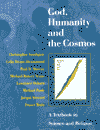The Photoelectric EffectAt the beginning of the 20th century, physicists turned their attention to the ability of light to eject electrons from metal. This could be explained as light imparting energy to electrons which then effectively ‘evaporate’ from the surface of the metal. The classical analogy with the evaporation of water suggests that some degree of evaporation should occur regardless of the frequency of the light, provided it is sufficiently intense. In reality, there is a clear threshold frequency, which varies from metal to metal, below which the effect will not occur. It was Einstein who, in 1905, explained this anomaly by assuming that the energy imparted by the light is packaged (quantised) in a manner that is related to the frequency of the light rather than spread evenly over the wavefront. This effect is more akin to light behaving as packets of energy - indeed as particles - than as waves (see wave-particle duality). Furthermore, Einstein assumed that the way in which electrons absorbed that energy is also quantised - so that they can only acquire the energy necessary to escape if the light is of sufficiently high frequency. Light of frequencies lower than this threshold has no effect regardless of the intensity of the light source. For a description of another problem for the classical description, see the ultraviolet catastrophe.
Email
link | Feedback | Contributed by: Dr.
Christopher Southgate |





